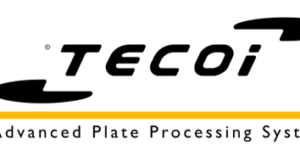When the Rubber Hits the Mold
This shop profile explores how one small mold-maker relies on ingenuity and technology to succeed when times get tough.
Posted: May 9, 2008
Jack Latragna owns SHM (Gardnerville, NV), a 2500 sq ft mold making business that does turning, milling, sawing, grinding and inspection for compression, transfer and injection molds used in the rubber industry. This guy thinks molds – the one he's currently working on, the one just finished, the one yet to come. These days especially, the ones yet to come.
With remarkable unambiguity, Latragna acknowledges how much of the industry he and other mold makers once supplied routinely has been swept away to places like China, Taiwan, Vietnam and India. "As things change in our industry," he says, "we don't see many high volume production jobs. Hardware stores once carried faucet washers from Brasscraft, Crane, and Fluid Master that came out of SHM molds. But not anymore."
Latragna doesn?t build molds from mold drawings. "I build from part drawings," he emphasizes. Latragna does all the engineering of the mold. When he ships a mold, it's his design, not someone else's. "This gives us a very real sense of the mold as our product. If the mold doesn't work correctly due to some issue, it's our issue," he adds. "There's a very real sense that we build a product, versus being just a job shop."
Dimensional issues are not a problem since the company uses CAD/CAM and CNC. Any quality issues usually arise from a process problem, such as if a part doesn't fill quite right, if the gates aren't quite right, or if the customer wants a handle someplace else on the mold so they can hold it or clamp it.
SHM doesn?t generally work on complex plastic molds. Plastic molds usually require a mold designer to engineer the mold prior to the product/mold being sent to a machine shop. These tend to be more complicated. Rubber molds are different than plastic molds because they can be undercut and don't need slides, so the molds tend to be a bit simpler.
As such, many of Latragna's molds produce synthetic, elastomer products, such as silicone, fluorocarbon, gaskets, seals, bellows and diaphragms. He has also done grease seals used in the landing gear for commercial and military aircraft (a larger version of the Chicago Rawhide seal found on the wheel bearing of a car). In fact, over the past 40 years Latragna has done just about everything: the backsplash on garbage disposals, a gasket for a nuclear weapon, pacifiers, nursing aides that look like breasts, earplugs, and a lot of general industrial bellows, boots or gaskets.
But this shop is not limited to only small molds. "I just finished a mold that weighed 500 lbs," explains Latragna. "The part was 12 in x 8 in x 6 in and looked like a slightly shrunken irrigation box that goes into the lawn where the sprinkler valves hook up. However, this is a military product so I don't know exactly what it is being used for. The print title block called it a boot . . . if the designers haven't thought of a good name for a rubber part, they call it a boot."
Until recently, SHM machined molds with two different vertical machining centers (VMCs). One was an 18 year-old Bridgeport that Latragna decided to sell because the machine had seen its best years and he needed more capacity, tighter accuracy and repeatability, and greater spindle power.
During his search, Latragna came across a GBI/Feeler VM32SA that can take full hp cuts in die steel with ceramic inserts without vibrating or shaking. This VMC uses a mechanically counterbalanced head – ideal for SHM?s operation in the Lake Tahoe area, where the mountains create a great source of deafening thunderstorms and power anomalies that tend to briefly interrupt the plant?s electrical supply.
The Bridgeport VMC Latragna sold also had a counterbalanced head, but his other VMC has no counterbalanced head. Consequently, he would scrap a part every time there was a power interruption. Latragna looked into getting an uninterruptible power supply for the other VMC because they were relying so heavily upon it. "I used it for all my 3D work and a lot of untended overnight machining," he says. "We might get a little blip in our power – not much, just enough for the lights to flicker – and boom! We've scrapped a part and broken tooling. When you only make one part, and it's one heck of an expensive part, that's a 100 percent scrap rate."
If a power outage occurs now, the new VM32SA just stops cutting and the head doesn't drop. No scrapped part. No broken tool.
A large drill uses fairly low speeds. As servo speed goes down, the torque drops off without the use of a gearbox. Though Feeler tremendously improved the torque on drilling without a gearbox, Latragna was concerned about linear guide ways from a dampening point of view. The VM32SA Series uses box ways on the Z-axis with linear guides on X and Y axes, which he feels is a good compromise.
The other VMC has all linear guides and can't hold a candle to the milling performed by the Feeler. For drilling, Latragna feels they might be equivalent. But when milling, the linear guide VMC shakes and rattles. "The Z-axis box way dampens vibration for steel cutting machines, whereas linear guides don't," explains Latragna.
He doesn't feel rigidity is the real issue regarding vibration dampening characteristics. "A number of things can cause chatter. Sometimes it might be similar to positive feedback in an oscillator circuit. It tends to run away and the chattering gets worse. The oil between the box way and the sliding members dampens that out entirely," he says.
"Linear ways are popular because they are a cheaper way to build a machine and they allow higher rapid traverse rates. I suppose that's an issue in production-type work," Latragna continues, "but I don't really have any milling benchmarks for production in die/mold work. In fact, I just turn the rapids off on the machines and use a high feed rate for "G0" moves. When we do the first part – and it's the only part – I get scared when the table takes off at 900, 1200, 1500 ipm. I think the VM32SA goes 1400 ipm, and that's too fast for me."
The VM32SA is basically designed for large parts, but it runs small parts, too. Its 30 in x 20 in travel can reach almost the entire plate in mold sizes ranging up to 24 in x 24 in. "I will often run a mold base similar to a die set," says Latragna. "It has match plates, pins, bushings, etc. I'll run the bottom on one VMC and the top on the other and they'll line up. I have 0.001 in clearance between pin and bushing, and we hold well within 0.0002 in on hole location."
The other concern is 3D accuracy. Sometimes the shop must machine the parting line if an odd-shaped line is involved. "If your machine is volumetrically inaccurate, the A half and the B half won't match well and the mold will flash," explains Latragna. "This is very difficult for us to check because I don't have a 3D CMM. We must see if the shape matches the CAD profile. If we machine the A and B halves, then insert in a little silicone along the parting lines during assembly, we can determine whether we have a good match."
Latragna believes his changeover times on his new VMC are measured in minutes rather than hours. He doesn't generally have any complicated fixturing. The parts are usually in a vise or a set of parallels bolted directly to the table.
Latragna does 100 percent off-line programming on the Feeler Fanuc 0i-MB control. Though the Fanuc has a limited amount of internal memory, a memory card slot was included as standard equipment so Latragna just drags and drops the files from the office PC to a PCMICA card. "I plug it in and can have programs that are virtually unlimited in length. The Fanuc won't recognize more than 10,000 lines of code if that code includes line numbers, so I just post it with no line numbers. I can have millions of lines of code."
While the machine cuts one part, Latragna is programming the next one. His program is often ready to go prior to the new part being loaded into the machine. The changeover is very quick and completed in minutes. "I try to design things," he explains, "for ease of manufacture. The tool is designed around its function to make a specific part. Almost equally important, we must be able to build the tool quickly and accurately in-house with the machinery that we've got."
Products are generally designed to be finished in one clamping. In most cases, a mold base comes off the VM32SA finished. Occasionally, one may be flipped over to its backside to counterbore some boltholes on a drill press. "Every five years we may get a complex cavity, such as a three-way manifold," remarks Latragna, "that must be fixtured five times to reach every area."
The automatic tool changer on the VM32SA is used all the time. The ATCs of both the VMCs are pre-loaded from tools 10 through 21 because the other ATC takes 21 tools max, and the Feeler takes 24. "We set up 22, 23, 24 for 0.5 in dowel pins and bushings," explains Latragna. "Tools 10-24 are the same cutters used all the time for mold base operations: drilling the holes for the leader pins and bushings, boring and milling. I even have an edge finder in tool 20 on both of my machining centers in case I need to pick up an edge. It's a very handy labor saving device."
Materials vary depending on the job. The lower cost tools are made out of a sulfurized SAE 1045 material. The requirements of volume production for the medical field demand pre-hardened 400 Series stainless steels and pre-hardened 4130, 4140 Series chrome moly steels, including P20. A2 and, more often, S7 are used for the heat-treated and quenched Class A tooling.
"I've done mold work for so long that I don't even know how to machine aluminum anymore," smiles Latragna. "We had a job made out of aluminum not long ago. I was dismayed: 'What is this mess, with chips flying all over the place?' You sweep the shop and get done, then sweep it again. The chip conveyor on the VM32SA is still spitting out aluminum from that project, because I had to start with a big chunk of material and whittle it down."
Along with the four coolant nozzles mounted to the spindle nose, the spindle head of the VM32SA features four loc-line hoses with little valves positioned on the side of the spindle opposite the toolchanger. The front one is for a compressed air blast. An M7 code will call up a compressed air flow from that nozzle that comes in handy for materials and cutter combinations that don't like oil and don't like coolant, but prefer to run dry. When working in a pocket, the air flow keeps the cutter from recutting it's own chips.
R.L. Frederick is a technical writer living in Hebron, KY.
SHM, 1291 Industrial Court #A, Gardnerville, NV 89410, 775-783-9048.
GBI Cincinnati, Inc., 6899 Steger Drive, Cincinnati, OH 45237, 513-841-8684, Fax: 513-841-7326, www.gbicincinnati.com.











